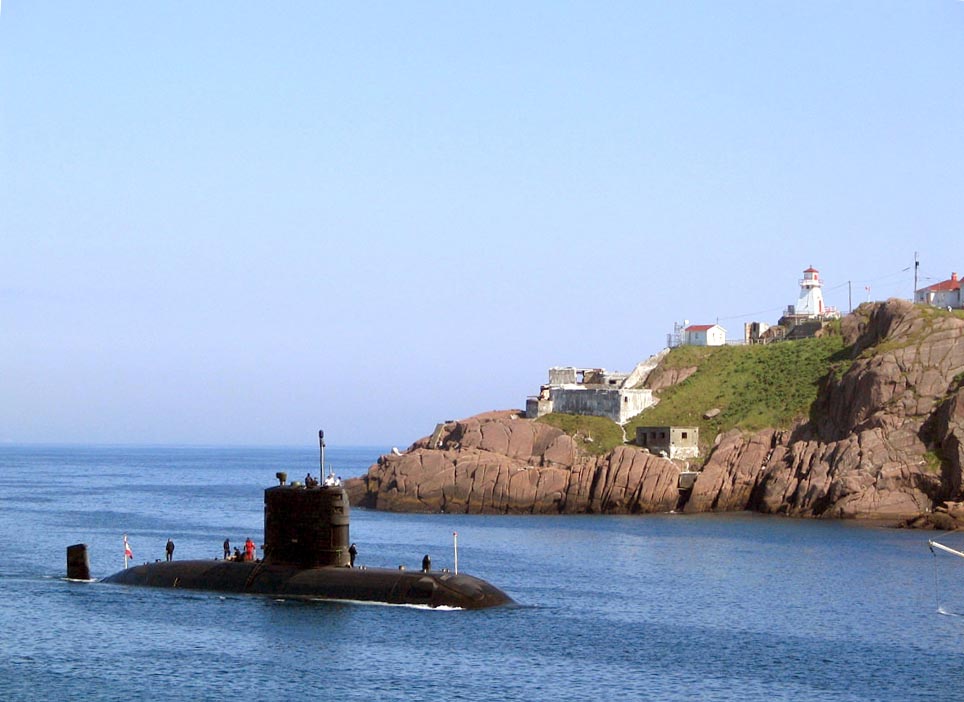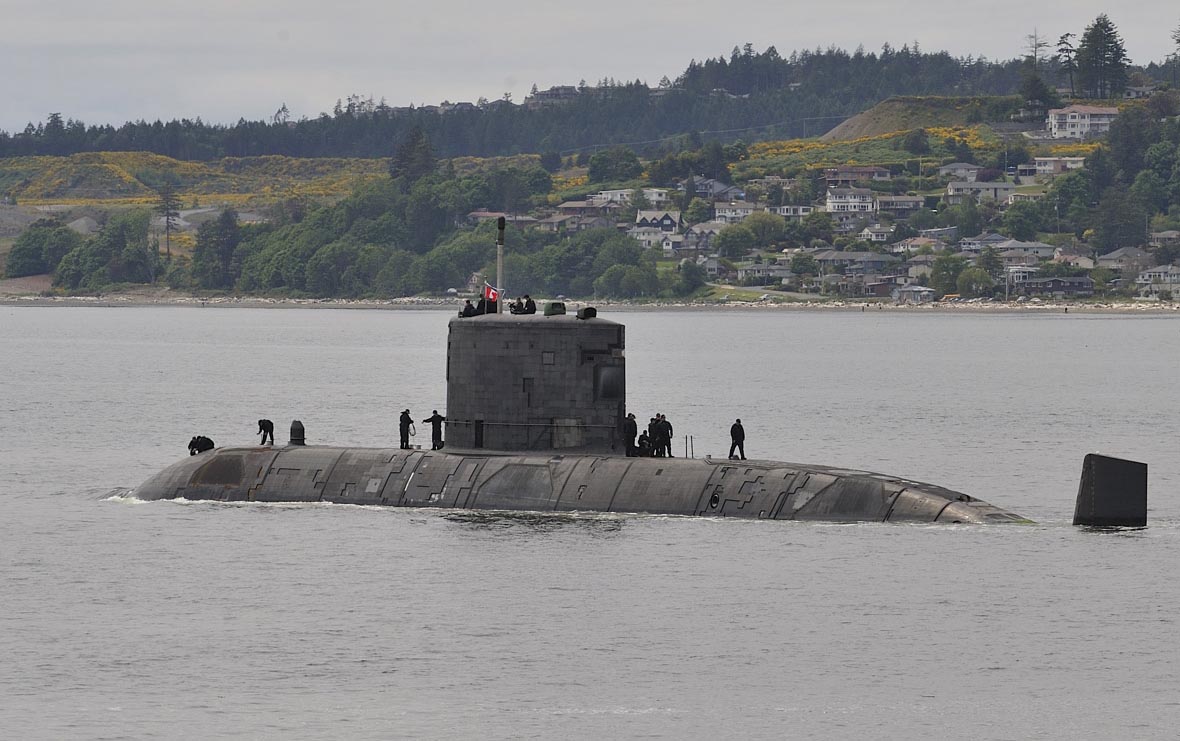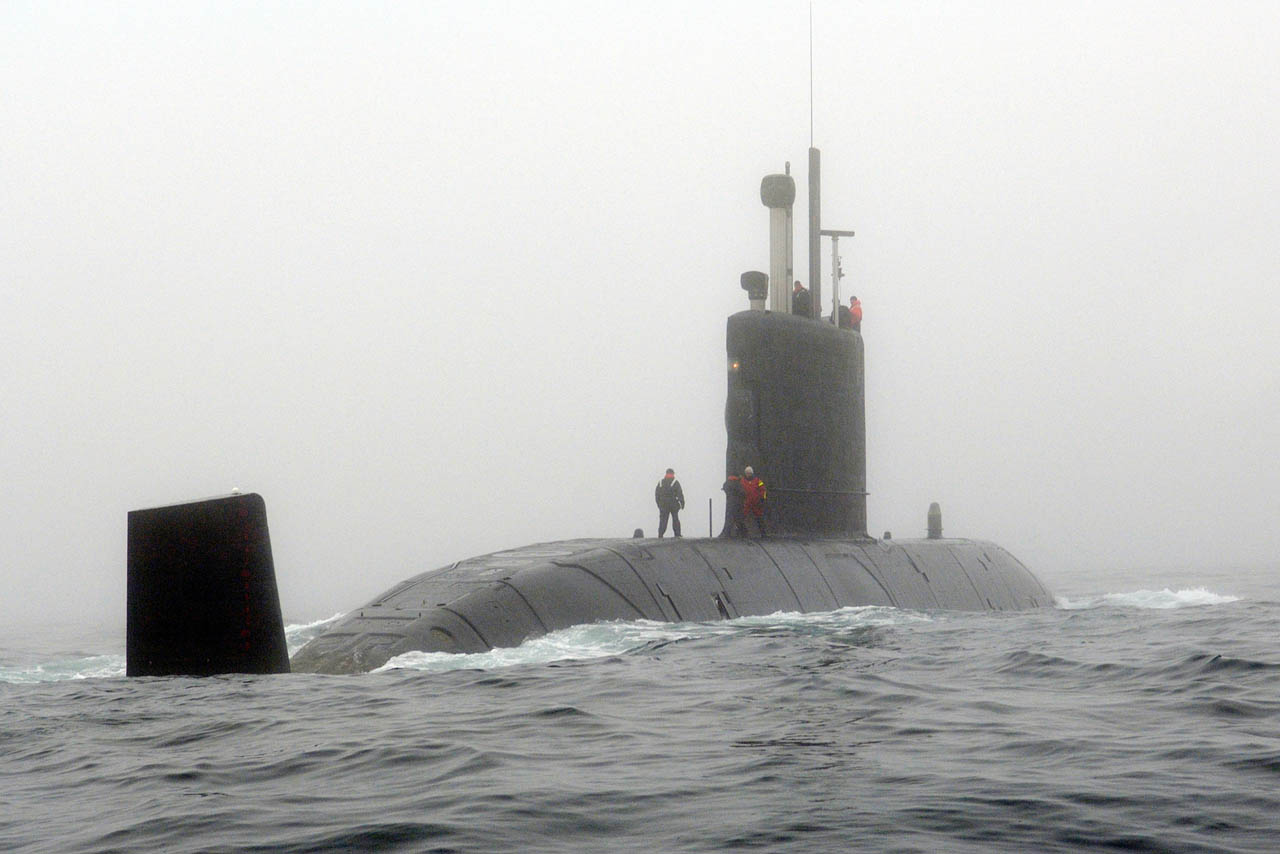HMCS CORNER BROOK (SSK 878)

HMCS CORNER BROOK
The History of HMCS CORNER BROOK

HMCS Corner Brook (SSK 878) is a long-range hunter-killer submarine (SSK) of the Canadian Navy. She is the former Royal Navy Upholder class submarine HMS Ursula (S42), purchased from the British at the end of the Cold War. She is the third ship of the Victoria class and is named after the city of Corner Brook, Newfoundland.
The submarine was laid down as HMS Ursula at Cammell Laird's Birkenhead yard on 10 January 1989. She was launched on 28 February 1991, and commissioned into the Royal Navy on 8 May 1992.
Looking to discontinue the operation of diesel-electric boats, the British government offered to sell Unicorn and her sister submarines to Canada in 1993. The offer was accepted in 1998. The four boats were leased to the Canadians for US$427 million (plus US$98 million for upgrades and alteration to Canadian standards), with the lease to run for eight years; after this, the submarines would be sold off.
Problems were discovered with the piping welds on all four submarines, which delayed the reactivation of Unicorn and her three sisters. Unicorn was handed over to the Royal Canadian Navy on 6 August 2001, and was commissioned as HMCS Windsor on 4 October 2003.
HMCS Corner Brook's displacement is approximately 2,200 tons surfaced and 2,400 tons submerged. Covered in anechoic tiles to reduce her detection by active sonar, the submarine is 70.3 metres long, 7.6 metres across the beam and has a deep diving depth in excess of 200 metres. The main hull is constructed of high tensile steel sections stiffened by circular internal frames. Equipment located outside the main hull is covered by the casing, which also gives the crew a safe walkway when the submarine is surfaced. The fin, which helps support the masts, serves as a kind of keel and provides a raised conning position.
HMCS Corner Brook has six torpedo tubes and can carry up to eighteen Mark 48 Mod 4 heavyweight torpedoes for use against surface and sub-surface targets.
HMCS Corner Brook's sonar sets allow her to locate and track ships and other submarines "passively", that is without transmitting on active sonar and thus giving away her location. She is fitted with radar for general navigation, attack and search periscopes (incorporating video recording and thermal imaging), and an electronic support measures suite. The ship has two diesel generators, each capable of producing up to 1,410 kilowatts, and one main motor. The generators are used to charge two main batteries, each consisting of 240 battery cells. These batteries are used to power the submarine, which can reach a submerged speed of up to 20 knots (37 km/h).
In 2011, CORNER BROOK was deployed to Esquimalt, BC, her home port since then.
In June 2011, she ran aground in Nootka Sound, damaging the vessel's bow. She was sent for refit in 2014 to complete repairs.
HMCS CORNER BROOK Statistical Data
- Pendant: SSK 878
- Type: Submarine
- Class: Victoria (Ex-Upholder)
- Displacement: 2,185 long tons (2,220 t) surfac tonnes
- Length: 70.26 m / 230 ft
- Width: 7.6 m / 25 ft
- Draught: 5.5 m / 18 ft
- Speed: 12 surfaced, 20 dived, 12 snorti kts
- Compliment: 7 Officers and 40 Crew
- Arms: Six forward 21" tubes for 18 Mk.48 Mod 4 torpedoes
- Builder: Cammall Laird, Birkenhead
- Keel Laid: February 198
- Date Launched: 22 February
- Date Commissioned: March 2003
- Paid off:
Remarks
ex-HMS Ursula
More Images

HMCS CORNER BROOK (DND photo)

HMCS CORNER BROOK Credit: MCpl Blake Rodgers 2007 DND
